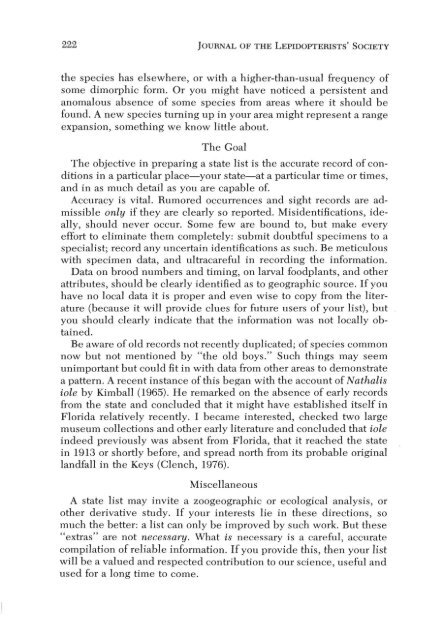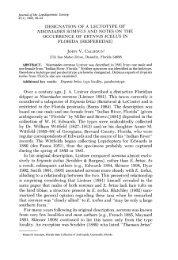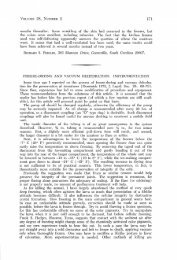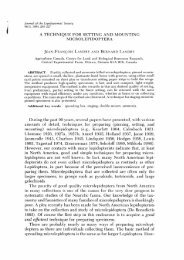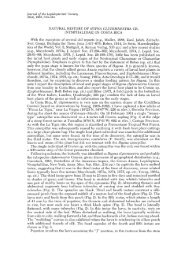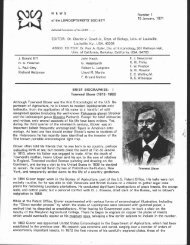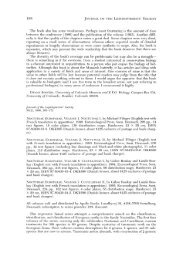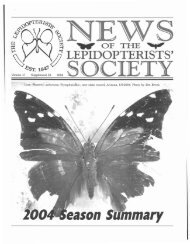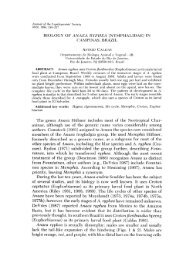HOW TO MAKE REGIONAL LISTS OF BUTTERFLIES - Yale University
HOW TO MAKE REGIONAL LISTS OF BUTTERFLIES - Yale University
HOW TO MAKE REGIONAL LISTS OF BUTTERFLIES - Yale University
Create successful ePaper yourself
Turn your PDF publications into a flip-book with our unique Google optimized e-Paper software.
222 JOURNAL <strong>OF</strong> THE LEPIDOPTERISTS' SOCIETYthe species has elsewhere, or with a higher-than-usual frequency ofsome dimorphic form. Or you might have noticed a persistent andanomalous absence of some species from areas where it should befound. A new species turning up in your area might represent a rangeexpansion, something we know little about.The GoalThe objective in preparing a state list is the accurate record of conditionsin a particular place-your state-at a particular time or times,and in as much detail as you are capable of.Accuracy is vital. Rumored occurrences and sight records are admissibleonly if they are clearly so reported. Misidentifications, ideally,should never occur. Some few are bound to, but make everyeffort to eliminate them completely: submit doubtful specimens to aspecialist; record any uncertain identifications as such. Be meticulouswith specimen data, and ultracareful in recording the information.Data on brood numbers and timing, on larval foodplants, and otherattributes, should be clearly identified as to geographic source. If youhave no local data it is proper and even wise to copy from the literature(because it will provide clues for future users of your list), butyou should clearly indicate that the information was not locally obtained.Be aware of old records not recently duplicated; of species commonnow but not mentioned by "the old boys." Such things may seemunimportant but could fit in with data from other areas to demonstratea pattern. A recent instance of this began with the account of Nathalisiole by Kimball (1965). He remarked on the absence of early recordsfrom the state and concluded that it might have established itself inFlorida relatively recently. I became interested, checked two largemuseum collections and other early literature and concluded that ioleindeed previously was absent from Florida, that it reached the statein 1913 or shortly before, and spread north from its probable originallandfall in the Keys (Clench, 1976).MiscellaneousA state list may invite a zoogeographic or ecological analysis, orother derivative study. If your interests lie in these directions, somuch the better: a list can only be improved by such work. But these"extras" are not necessary. What is necessary is a careful, accuratecompilation of reliable information. If you provide this, then your listwill be a valued and respected contribution to our science, useful andused for a long time to come.


